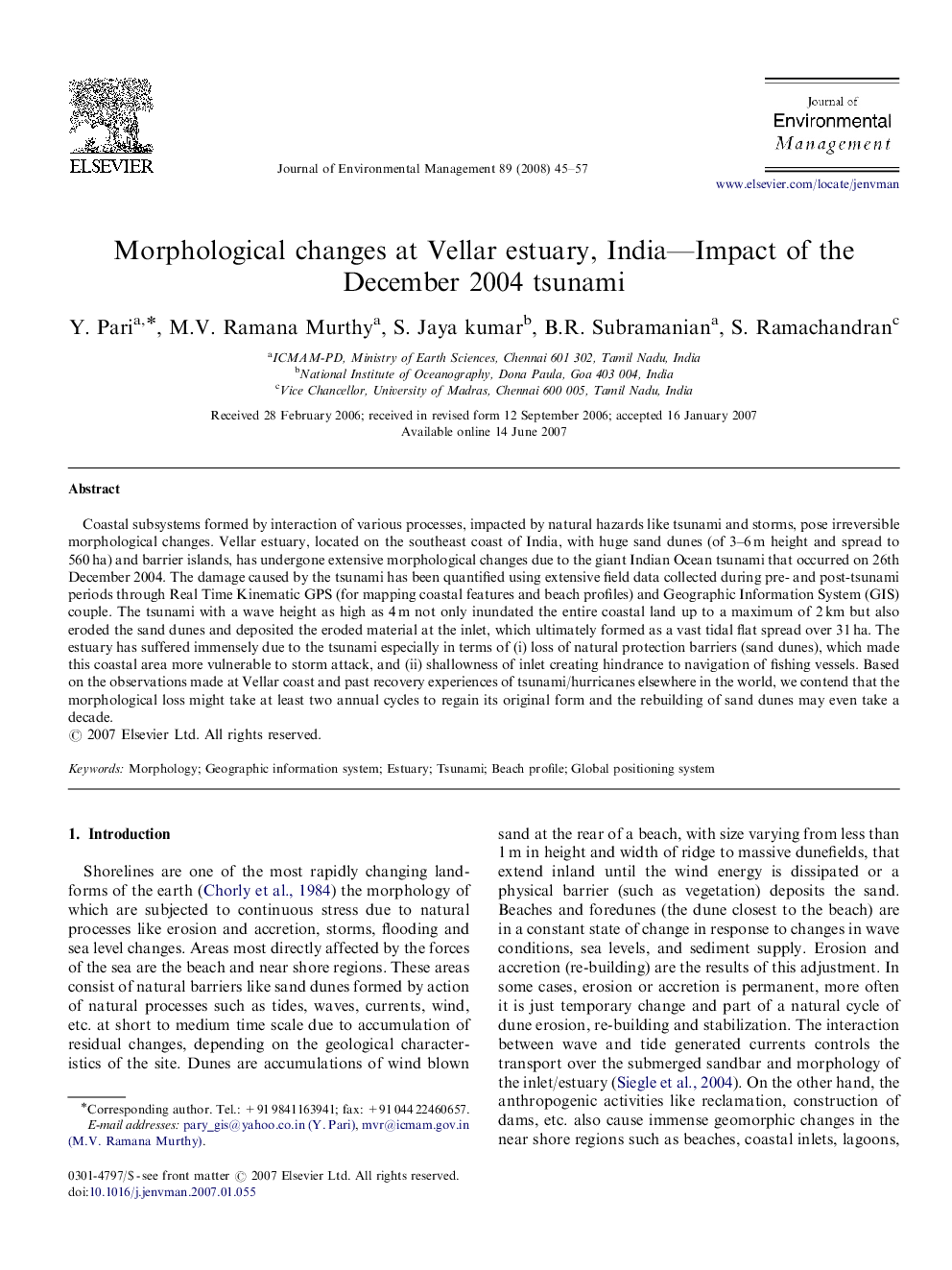| Article ID | Journal | Published Year | Pages | File Type |
|---|---|---|---|---|
| 1057720 | Journal of Environmental Management | 2008 | 13 Pages |
Coastal subsystems formed by interaction of various processes, impacted by natural hazards like tsunami and storms, pose irreversible morphological changes. Vellar estuary, located on the southeast coast of India, with huge sand dunes (of 3–6 m height and spread to 560 ha) and barrier islands, has undergone extensive morphological changes due to the giant Indian Ocean tsunami that occurred on 26th December 2004. The damage caused by the tsunami has been quantified using extensive field data collected during pre- and post-tsunami periods through Real Time Kinematic GPS (for mapping coastal features and beach profiles) and Geographic Information System (GIS) couple. The tsunami with a wave height as high as 4 m not only inundated the entire coastal land up to a maximum of 2 km but also eroded the sand dunes and deposited the eroded material at the inlet, which ultimately formed as a vast tidal flat spread over 31 ha. The estuary has suffered immensely due to the tsunami especially in terms of (i) loss of natural protection barriers (sand dunes), which made this coastal area more vulnerable to storm attack, and (ii) shallowness of inlet creating hindrance to navigation of fishing vessels. Based on the observations made at Vellar coast and past recovery experiences of tsunami/hurricanes elsewhere in the world, we contend that the morphological loss might take at least two annual cycles to regain its original form and the rebuilding of sand dunes may even take a decade.
